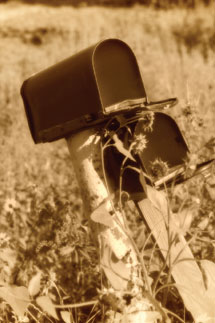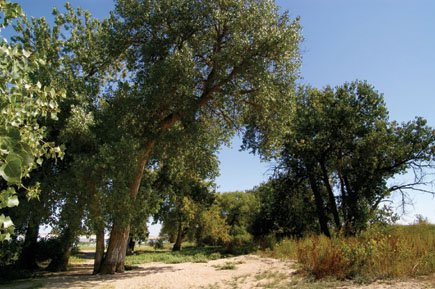Pentax’s K100D Super; The Digital K-Mount Revolution Continues Page 2
The camera has a 6.1-megapixel APS-C-sized CCD and when combined with an 11-point
autofocus mechanism and 16-segment multi-pattern metering delivers excellent
image reproduction. The bright penta-mirror viewfinder features a 96 percent
field of view and 0.85x magnification. The K100D Super has a 2.5" LCD
monitor with 210,000 pixel resolution and while that sounds like a lot, I found
that really contrasty, backlit images sometimes exhibited a tiny bit of posterization.
A user-friendly Mode dial features Auto Picture and Picture modes as well as
Scene modes that will help SLR newbies get the best possible image under a variety
of photographic conditions.
Pentax provides software for Mac OS and Windows computers that converts its
PEF (Pentax Electronic File) raw files into more portable formats. Adobe's
Lightroom 1.2 and their Camera Raw 4.2 plug-in supports 14 additional digital
cameras, including the Pentax K100D Super. The Adobe Camera Raw 4.2 plug-in
is available as a free download for users of Photoshop CS3 and Photoshop Elements
4.0 (Mac OS) and 5.0 (Windows). It will not, however, work with Photoshop CS2
and previous versions.
 |
|
|
In The Field
The Pentax K100D Super is surprisingly rugged for an inexpensive D-SLR. Sure
it's covered in the inevitable fiber-reinforced polycarbonate shell, but
it has a stainless steel chassis. Ergonomics are good but because I like bigger
rather than smaller cameras, I missed the battery grip that's optional
with the K10D. To keep the price down it uses a penta-mirror instead of a prism,
but the view through the lens was never anything but clear and bright. I wished
the K100D Super had an ISO 100 setting though I usually shoot at 200 anyway,
but still... On the other side of the sensitivity spectrum, the camera offers
ISO 3200 that produced noise levels that were tight and what you might see with
images captured on ISO 800 color negative film. That didn't bother me
and if it bothers you there's always Neat Image (www.neatimage.com)
to reduce or eliminate digital noise.
The Pentax K100D Super permits in camera monochrome and image manipulation but
not at time of capture. The Digital Filters menu is accessible when viewing
the specific image you want to work with through the camera's Playback
menu and includes Black & White, Sepia, Color, and Soft. A Brightness filter
lets you apply plus or minus eight levels of brightness to an image file and
the Slim filter lets you change the photograph's horizontal and vertical
aspect ratios. After applying any of the filters and clicking the OK button,
you're prompted to "Save As" and the file will save the processed
image under a new name. The upside of using this process is that when a filter
is applied, the color original remains untouched, but I prefer that monochrome
images be captured directly. I appreciate Pentax's logic but nevertheless
found it inconvenient to capture then convert a file.
 |
|
|
Like the other Pentax D-SLRs, the K100D Super uses Secure Digital (SD) memory
cards. It is also compatible with the SDHC (Secure Digital High Capacity) subformat
that allows capacities in excess of 2GB and uses a different memory addressing
method that only works in SDHC compatible devices. Images captured with the
K100D Super onto a 4GB SDHC card would not work in my Belkin card reader, so
I had to replace it with a compatible reader from SanDisk. Yes, I could have
used a direct connection to the camera and that may be the short-term solution
for K100D Super shooters who lack a compatible card reader, but with prices
around $20 just go and buy a new one.
Digital infrared fans will be glad to know that the K100D Super is--when
used with the appropriate filters--IR capable. The two lenses that I used
with the camera (see the "New Pentax Lenses" sidebar) have large
filter sizes. The 16-50mm f/2.8, for example, is 77mm so for the examples that
accompany this story I used an A-sized Cokin 89B filter a.k.a. 007 and held
it in front of the lens with my fingers. This is the recommended method to avoid
IR dilution caused by using a modular filter holder that would allow unfiltered
light to come in from the sides. Yep, sometimes I get my fingers in the shot,
especially at the 16mm setting. The best way to go will be with a 77mm filter;
a Hoya RM-72 filter costs $262.50, and is the sanest way to go if you are serious
about digital IR. A Cokin 007 in "P" size, which should keep your
fingers out of the shot, is $45.
- Log in or register to post comments

































